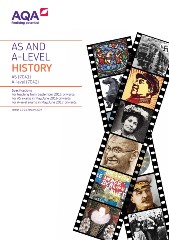2B The Wars of the Roses, 1450–1499
This option provides for the study in depth of a period in which the English monarchy suffered instability and the country was subjected to a range of political, economic and social pressures. It develops concepts such as authority, hierarchy, faction and legitimacy. It also encourages students to reflect on the sources of power within a state, causes of political breakdown and the impact of dynastic instability on the ‘common people’.
Part one: the Fall of the House of Lancaster, 1450–1471
The origins of conflict, 1450–1459
- English society and politics in 1450: the weakness of Henry VI’s rule; baronial factions; Cade’s rebellion; the loss of Normandy
- The impact on English politics of the emerging power and influence of Richard of York
- The outbreak of war: the first Battle of St Albans and the balance of military power in 1455
- The uneasy peace: the influence of Margaret of Anjou; factional rivalries and their impact on English society
The War of the Barons, 1459–1461
- The renewal of war: York’s flight into exile; the emergence of Warwick ‘the Kingmaker’; the capture of Henry VI at Northampton
- Filling the political vacuum: the rule of Richard of York as Protector of England
- Shifting loyalties and the Lancastrian revival: Wakefield; the second Battle of St Albans; the death of York and the restoration of Henry VI
- Proclamation of Edward IV as King; Yorkist victory at Towton; the strengths and weaknesses of the Yorkists by 1461
The triumph of the Yorkists, 1461–1471
- The personal rule of Edward IV and the political impact of his marriage to Elizabeth Woodville
- Factional rivalries: Warwick ‘the Kingmaker’; attempts to restore Henry VI; Margaret of Anjou; Edward, Prince of Wales
- The crushing of the Lancastrian cause: Barnet and Tewkesbury; the destruction of the Lancastrian nobility
- The impact of the baronial wars on English society by 1471: the weakening of the aristocracy; the impact on trade and the economy
Part two: the fall of the House of York, 1471–1499 (A-level only)
'The Sun in Splendour': the reign of Edward IV, 1471–1483 (A-level only)
- The consolidation of royal authority under Edward IV and the development of new methods of government
- Factional rivalries and court politics: hostile reactions against the influence of the Woodvilles
- Change and continuity in English society during a decade of peace: trade and the economy, social mobility, the regions
- The premature death of Edward IV and the crisis of the Yorkist succession
The downfall of the Yorkist Monarchy, 1483–1486 (A-level only)
- The coup d’état by Richard of Gloucester: the issue of the Princes in the Tower and Richard III’s position as a usurper
- Factional rivalries; the emergence of Henry Tudor, dissensions among the Yorkist nobility, Buckingham’s rebellion
- The strengths and weaknesses of Richard III’s position in 1484: the death of his wife and heir; the problem of the succession
- The downfall of Richard III: Bosworth, the proclamation of a new Tudor dynasty under Henry VII and his marriage to Elizabeth of York
The end of the Yorkist Dynasty, 1486–1499 (A-level only)
- Yorkist opposition to Henry VII: the Lovell revolt; defeat of the Pretender Lambert Simnel at Stoke; the Yorkshire Uprising
- Attempts to maintain the Yorkist cause: Margaret of Burgundy, the Earl of Warwick and the Pretender Perkin Warbeck
- The end of the Yorkist challenge: defeat of Warbeck and his Scottish and Cornish allies; the execution of Warbeck and Warwick
- The impact of the Wars of the Roses on English society by 1499: trade and the economy; central authority and the regions
